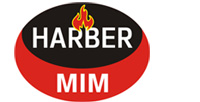In recent years, relying on the rapid development advantages of China's automobile industry, China's auto parts industry has developed rapidly. As one of the important factors that maintain the continuous and healthy development of the automobile industry, it has accounted for more than 80% of China's total automobile product exports. In 2017, China's auto parts exports reached 49.92 billion US dollars, an increase of 8.9% year-on-year, and the first stop-loss and stabilization situation after two consecutive years of decline in export value, but it still lags behind the national export growth of 1.9%. Affected by factors such as lack of core technology, poor development of emerging fields, intensification of trade frictions, and rising manufacturing costs, China's auto parts export industry still has five major growth "worries".
Core technology climbing is difficult, and market squeezing is serious. "American Automotive News" released the 2017 Global Automotive Parts Supporting Supplier Top 100 list. China only has 5 companies on the list, accounting for only 5%, while Japan, the United States and Germany have listed companies accounting for 67%. The reason is that China's auto parts core technology is insufficient. According to estimates, foreign companies occupy more than 80% of the car parts market; in high-tech fields such as automotive electronics and engine parts, foreign companies control market share as high as 90%. At the same time, due to weak research and development capabilities, the core technology has not yet got rid of the situation of dependence on imports. The trend of hollowing out technology has spread to the field of new energy vehicles. The key technologies of electric vehicles' "three-electric" systems such as motors, batteries and electronic control systems are far behind foreign countries. For example, as one of the key raw materials for new energy vehicle batteries, diaphragms still rely on imports by 60%.
Low-end production capacity is seriously surplus, and new energy industries are troubled internally and externally. In 2017, China's production and sales of new energy vehicles reached 794,000 and 777,000 respectively, a year-on-year increase of 53.8% and 53.3%, respectively. The production and sales ratio exceeded 40% of the world, maintaining the world's largest electric vehicle market position. However, the core component industry is affected by internal and external factors and its development is not smooth. Internally, in the field of power batteries, China's low-end production capacity is seriously surplus. According to statistics, by the end of 2017, China's power battery production capacity had exceeded 200GWh (gigawatt-hours), and the actual market demand was only 30GWh, while high-end products were in short supply. The domestic battery output value accounts for less than one-third of the country; externally, automotive parts manufacturing giants in Europe and America have successively built factories to seize the Chinese market. In 2017, Volkswagen, BMW, Panasonic, General Motors, Ballard, Codexis and other six well-known foreign parts companies publicly stated that they have invested or will invest in China to build factories involving diaphragms , Power batteries, fuel cells, lithium battery assembly and other core components have a greater impact on China's independent new energy vehicle parts industry.
Trade protection grows at a high level, and related industries are hard to escape from disaster areas. In 2017, there were 16 anti-dumping and anti-subsidy investigations and rulings on China's auto parts worldwide, a year-on-year increase of 45.5%, directly affecting glass, tires, hubs, radiators and other parts products exceeding US$1.5 billion. Emerging markets are particularly obvious. Brazil , India , Argentina , Turkey and other countries initiated anti-dumping and anti-subsidy investigations and rulings against China’s auto parts for a total of 11 cases , accounting for 68.8% of the total , exceeding developed market countries in Europe and America . In addition , in March last year , the United States launched a Section 337 investigation against certain hybrid vehicles and their parts from China , and trade restrictions continued to intensify .
Technical control continues to escalate , quality problems remain high . In 2017 , countries issued a total of 73 technical trade measures notifications related to auto parts products through the WTO platform , a year-on-year increase of 8.9% , involving motor vehicle signal devices , brake reflection devices , safety protection devices , automotive electronic devices And environmental protection requirements . As technical regulations become stricter , quality risks increase further . In 2017 , China’s exported auto parts were returned by foreign countries with an amount increased by 100.8% year-on-year , far higher than the national overall export return rate of 2.2% .
Cost "rising" continues , car company profits are difficult to sustain . Since 2017 , prices of raw materials related to auto parts have continued to soar . The price increase of rebar has reached more than 40% , and the average price increase of copper metal raw materials procurement and some non-ferrous metal raw materials is about 20% . The prices of chips and other electronic imported parts have increased by 10%-50% . As one of the most important materials for lithium batteries , the market price of cobalt has risen from 273,000 yuan/ton at the beginning of 2017 to 547,000 yuan/ton , an increase of 100.36% , and the price of lithium carbonate has also increased by more than 30% compared with the same period last year . The high cost further erodes corporate profits . At present , the industry average gross profit margin of domestic auto parts companies including 46 listed companies is only about 8% , which is more than 4 percentage points lower than in 2010 .
Harber Industrial Limited produces stainless steel-based, iron-based, copper-based, copper-iron alloy-based powder alloy parts products and zinc-aluminum alloy parts for customers. They are classified as SUS304, SUS316 stainless steel parts; various types of gears, gearbox-type iron-based parts; lock body, lock tongue, lock pull iron-based parts; complex shapes, different functions copper, iron-based structural parts; copper, iron, alloy-based bushings Oil-bearing; zinc-aluminum alloy die-casting supporting parts. Good at high-precision, high-performance, high-standard structural parts such as powder metallurgy gears and SGS low-noise, strong wear-resistant oil-bearing bearings, and proficient in complex-shaped parts and manufacturing.
The company has passed the 1SO9001:2016;1ATF16949:2016 quality certification system, obtained LFGB, DGCCRF food certification, was identified as a Guangdong science and technology innovation small giant enterprise, and passed the national high-tech enterprise evaluation.













